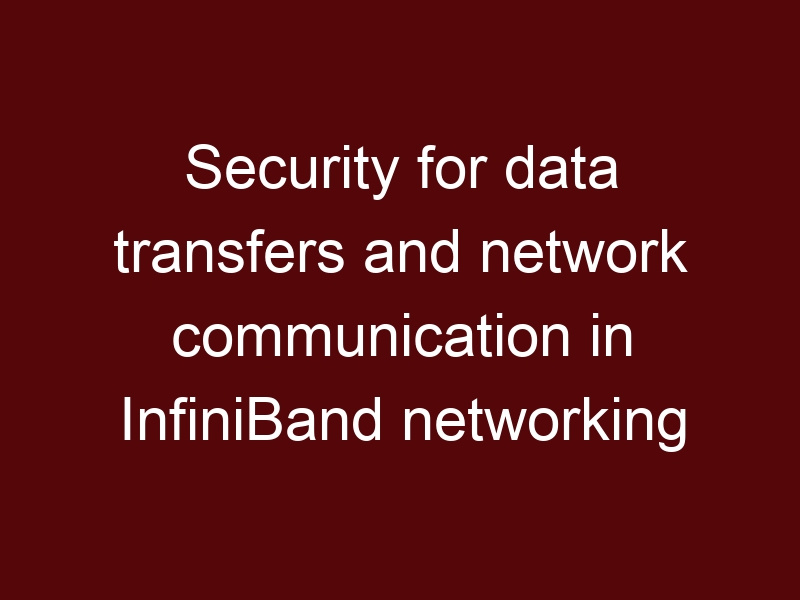InfiniBand provides several mechanisms to ensure security for data transfers and network communication in high-performance computing (HPC) and data center environments. These mechanisms help protect sensitive data, prevent unauthorized access, and ensure the integrity and confidentiality of information being transmitted. Here’s how InfiniBand addresses security:
- Physical Security:
InfiniBand’s physical layer security includes features like cable locks, tamper-evident seals, and secure cabinets to prevent unauthorized physical access to the network infrastructure. - Link Encryption:
Some InfiniBand HCAs (Host Channel Adapters) support link encryption, which encrypts data as it travels between devices over the InfiniBand links. This prevents eavesdropping and data interception. - Subnet Manager (SM) Access Control:
The Subnet Manager (SM) enforces access control policies to restrict the devices that can join the InfiniBand subnet. Only authorized devices are allowed to participate in the network. - Secure Subnet Manager (SSM):
InfiniBand includes a Secure Subnet Manager (SSM) mode that enhances security by requiring mutual authentication between devices and the SM before joining the subnet. This prevents unauthorized devices from joining the network. - Virtual LANs (VLs):
InfiniBand’s VLs allow logical segmentation of the network. This can be used to isolate different groups of devices, providing a level of network security by keeping traffic separate. - Firewalls and Access Control Lists:
InfiniBand switches can be configured with firewalls and Access Control Lists (ACLs) to control which devices are allowed to communicate with each other. This prevents unauthorized communication. - Virtual Private Networks (VPNs):
InfiniBand supports the creation of Virtual Private Networks (VPNs), allowing secure communication between specific devices or groups of devices. VPNs use encryption and authentication to ensure confidentiality. - Certificate-Based Authentication:
InfiniBand supports certificate-based authentication, where devices present digital certificates to establish their identity and authenticity during communication. - Key Management:
InfiniBand can use encryption keys to secure data transmissions. Effective key management ensures that keys are securely generated, distributed, and rotated. - Intrusion Detection and Prevention:
Intrusion detection and prevention systems can be deployed to monitor InfiniBand traffic for suspicious activities and prevent unauthorized access. - Firmware and Software Security Updates:
Keeping InfiniBand firmware, drivers, and software up-to-date with the latest security patches is essential to address vulnerabilities and protect against known threats. - Security Audits and Compliance:
Regular security audits and compliance checks help ensure that InfiniBand networks adhere to security best practices and meet industry regulations.
It’s important to note that while InfiniBand offers various security mechanisms, a comprehensive security strategy involves a combination of network security practices, secure system configurations, user authentication, and monitoring. Organizations should tailor their security measures to meet their specific requirements and the sensitivity of the data being transferred over the InfiniBand network.





